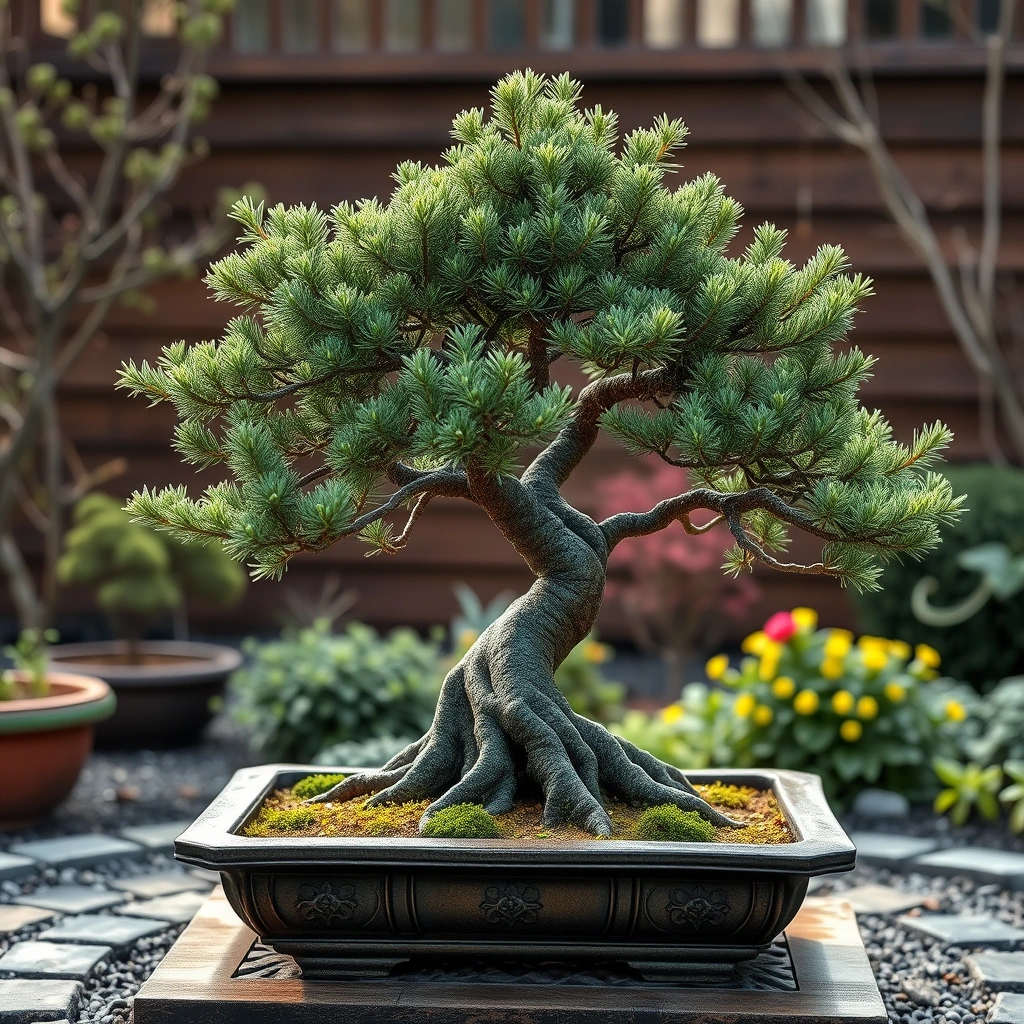Create Stunning Shohin Juniper Bonsai from Cuttings: A Step-by-Step Guide (Part 3)
Bonsai enthusiasts and beginners alike are often captivated by the beauty and intricacy of shohin bonsai - miniature trees that pack a big punch in a small package. In this comprehensive guide, we'll explore the process of transforming a simple juniper cutting into a breathtaking shohin bonsai, focusing on the crucial steps of refinement and styling.
This article is a continuation of a series, detailing the progress of an Itoigawa Shimpaku Juniper bonsai over two years. We'll cover essential techniques such as expanding the shari (deadwood), applying lime sulfur, styling secondary and tertiary branches, and preparing the tree for show-quality presentation.
TOC
- Preparing the Tree for Styling
- Expanding and Refining the Shari
- Preparing the Live Vein
- Applying Lime Sulfur
- Wiring and Styling
- Maintaining and Developing Your Shohin Juniper
- FAQ
- Conclusion
Preparing the Tree for Styling
Before diving into the intricate styling process, it's crucial to prepare your juniper bonsai properly. This involves several key steps:
-
Remove fertilizer pads: If you've been using fertilizer pads like Fertipad, remove them to get a clear view of the soil surface and trunk.
-
Clean up undersides of branches: Remove dangling foliage from the bottom of branches to create clean lines, which is especially important for shohin-sized trees.
-
Remove crotch growth: Eliminate any growth in the crotches of branches to maintain a clean appearance.
When cleaning up the tree, it's important to consider the timing and amount of foliage removal:
- Ideal timing: Early June (after the first flush of spring growth)
- Maximum foliage removal: 15-20% for Itoigawa junipers
- Species considerations: Different juniper species have varying tolerances for foliage removal
Expanding and Refining the Shari
The shari, or deadwood on the trunk, is a crucial aesthetic element in many bonsai designs. Here's how to expand and refine the shari on your juniper:
- Use a grafting knife or box cutter to carefully expand the existing shari.
- Cut just outside the original callus, expanding about 1/8 to 1/4 inch for a shohin-sized tree.
- Press the knife through the bark, phloem, and cambium until you reach the xylem (hardwood).
- Remove the section of live tissue to reveal a new, expanded shari.
- Create a spiral effect by expanding shari at different points along the trunk.
After expanding the shari, clean the deadwood using a toothbrush and water to remove any green algae or debris.
Preparing the Live Vein
To create a striking contrast between the deadwood and live parts of the tree:
- Remove flaky bark using a sharp knife or tool.
- Sand the live vein with 100-grit sandpaper to achieve a smooth, reddish color.
Be careful not to expose the phloem (whitish tissue) beneath the bark.
Applying Lime Sulfur
Lime sulfur is used to whiten and preserve the deadwood features:
- Mix lime sulfur with water at a 50/50 ratio.
- Apply the mixture to slightly damp deadwood for instant whitening.
- Use a small brush for precise application along the shari edges.
Wiring and Styling
Proper wiring is crucial for shaping your bonsai:
- Use copper wire for coniferous trees (sizes 14, 16, and 18 for shohin)
- Start with the bottom left branch (directional branch) and work upwards
- Wire primary structure first, then move to secondary and tertiary branches
- Use the least amount of wire necessary to achieve the desired shape
When styling:
- Create interplay between foliage and deadwood
- Fan out branches like a hand, laying them flat with a slight lift underneath
- Clean up undersides for a delineated look
- Fill gaps by repositioning branches from the rear
- Prune back elongating shoots to encourage dense growth
Maintaining and Developing Your Shohin Juniper
After styling, care for your bonsai by:
- Returning it to the growing area
- Reapplying fertilizer (e.g., Fertipad)
- Allowing growth until early September before the next pruning
- Continuing this cycle to develop dense foliage pads
FAQ
-
Q: How often should I style my shohin juniper bonsai? A: Major styling should be done every 1-2 years, with minor maintenance pruning performed as needed throughout the growing season.
-
Q: Can I use aluminum wire instead of copper for my juniper bonsai? A: While aluminum wire can be used, copper wire is preferred for conifers due to its superior holding power and ability to create tighter bends.
-
Q: How long does it take to develop a show-quality shohin juniper bonsai from a cutting? A: It typically takes 5-7 years of dedicated care and styling to develop a show-quality shohin juniper bonsai from a cutting.
-
Q: Is it necessary to use lime sulfur on the deadwood of my juniper bonsai? A: While not strictly necessary, lime sulfur helps preserve the deadwood and creates an attractive white color that contrasts beautifully with the live vein.
-
Q: How can I encourage denser foliage growth on my juniper bonsai? A: Regular pruning of elongating shoots throughout the growing season encourages back-budding and denser foliage growth. Aim for three pruning cycles per year for optimal results.
Conclusion
Creating a stunning shohin juniper bonsai from a cutting is a rewarding journey that requires patience, skill, and attention to detail. By following the techniques outlined in this guide - from expanding the shari to careful wiring and styling - you can transform a simple cutting into a miniature masterpiece.
Remember that bonsai is an art form that evolves over time. Each styling session brings your tree closer to its full potential, but it may take several years before it's ready for exhibition. Enjoy the process, learn from each step, and watch as your shohin juniper bonsai grows into a beautiful representation of nature in miniature.

